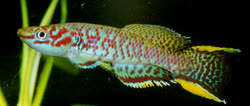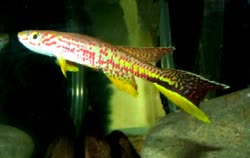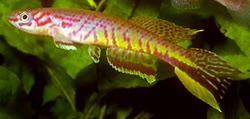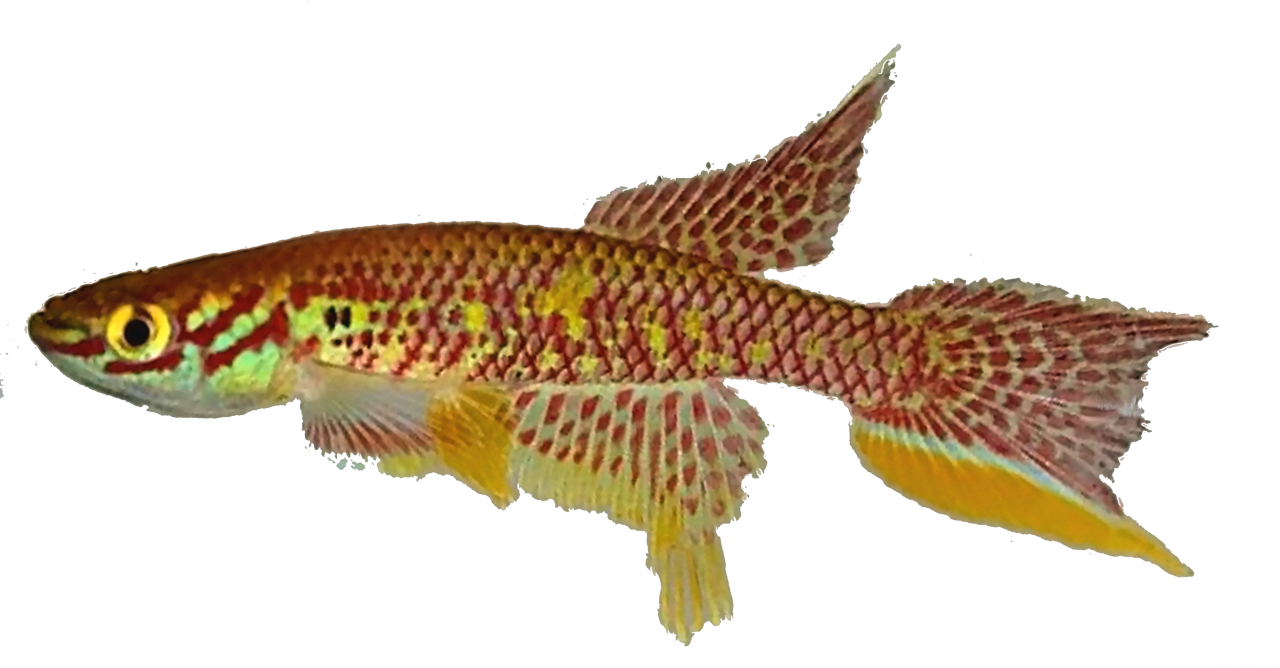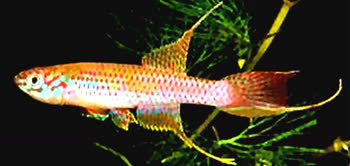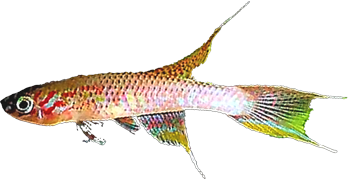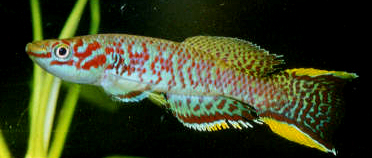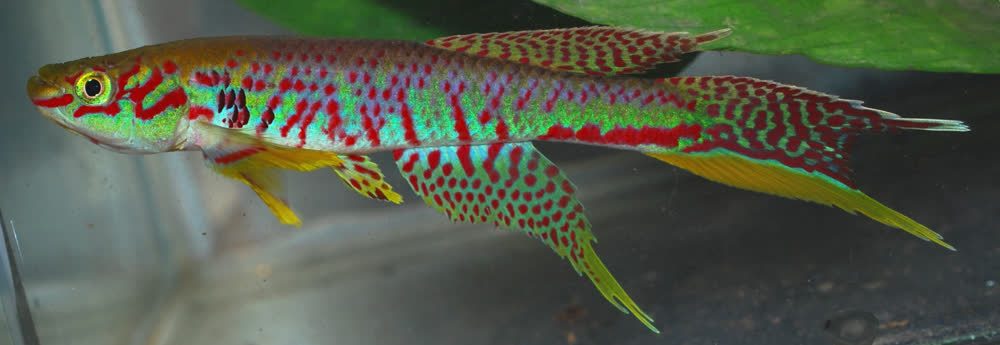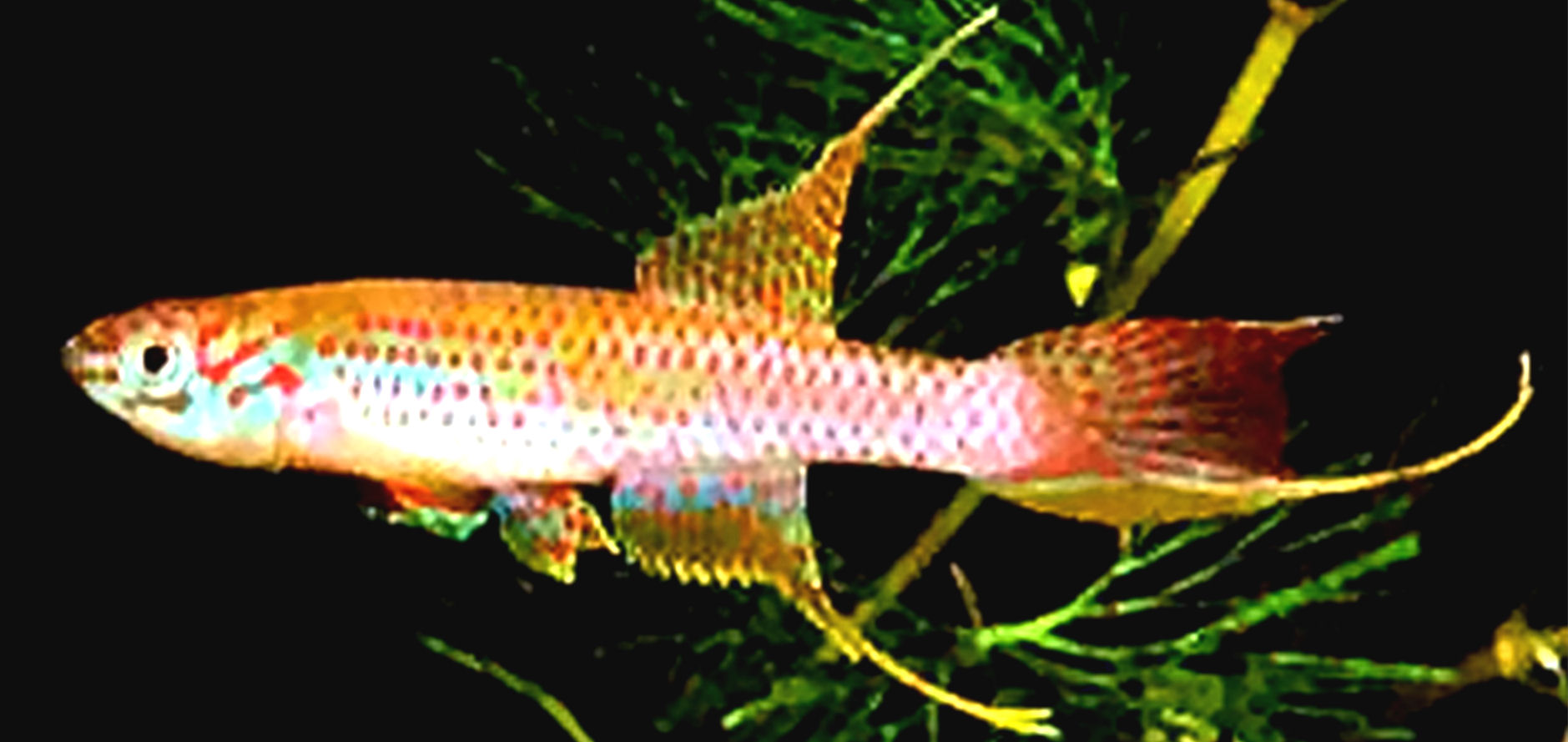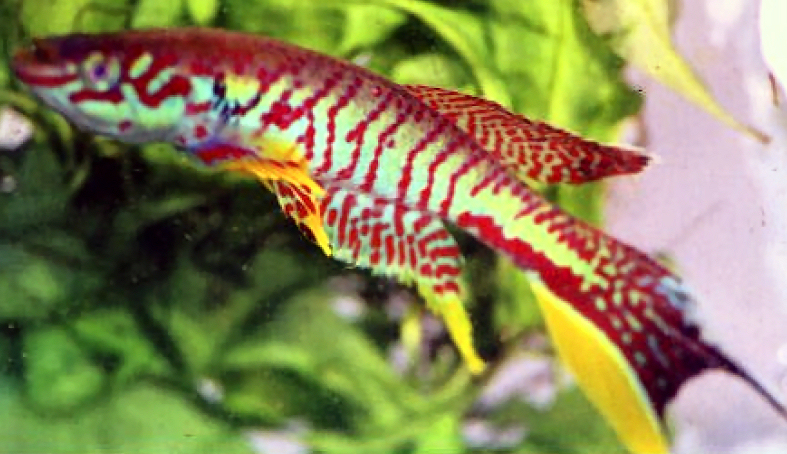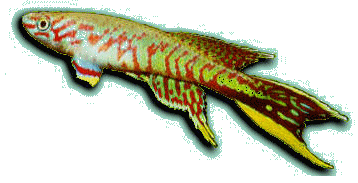|
batesii Yellow upper and lower caudal margins both present. Green stripe on caudal peduncle absent.
batesii, Fundulus Boulenger [G. A.] 1911:261 [Annals and Magazine of Natural History (Series 8) v. 8 (no. 44); ref. 578] Ja and Bumba rivers, Congo River basin, about 3°08'N, 12°25'E, southern Cameroon. Syntypes: (several) BMNH 1909.7.9.73-77 (6) Bumba R., 1907.5.22.210-211 (2?) Ja R. •Valid as Fundulopanchax batesii (Boulenger 1911) -- (Wildekamp 1996:158 [ref. 23649]). •Valid as Aphyosemion batesii (Boulenger 1911) -- (Wildekamp et al. 1986:200 [ref. 6198], Seegers 1988:56 [ref. 19980], Lazara 2001:10 [ref. 25711], van der Zee et al. 2007:163 [ref. 30034]). Valid as Raddaella batesii (Boulenger 1911) -- (Sonnenberg & Schunke 2010:337 [ref. 30994]). Current status: Valid as Raddaella batesii (Boulenger 1911). Nothobranchiidae. Distribution: West-central Africa. Habitat: freshwater. Of all the photos of this fish around so far this one looks most like Boulenger's original desctiption. |
|
kunzi Green stripe on caudal peduncle; lower caudal margin always present, upper caudal margin may be present in some populations and one or both may be yellow, white or blue and both margins may not be the same color. One of the most striking of all killifish let along all Aphyosemions - in a family of fish more colorful than other members of the family. As the probably ancestor of SJO, often called "the King of the Killies" perhaps that title more rightly belongs to this fish not only for the striking appearance but for as well the idea that perhaps these fish are the ancestors of all Aphyosemion. From the Catalog of fishes: kunzi, Aphyosemion Radda [A. C.] 1975:15, Pl. 10 [British Killifish Association, Killi News (Separate) Jun. 1975; ref. 20501] Brook on the right side of road near Mboamo village, Etakanyabé, 20 kilometers east of the ferry across the Ivindo in Makokou on National Road No. 15 to Okondja, , northern Gabon 0°30'N, 13°01'E [or 0°32'N, 12°57'E]. Holotype: NMW 77335. Paratypes: NMW 77336-37 (2, 2). •Synonym of Aphyosemion batesii (Boulenger 1911) -- (Wildekamp et al. 1986:200 [ref. 6198], Lazara 2001:11 [ref. 25711]). •Synonym of Fundulopanchax batesii (Boulenger 1911) -- (Wildekamp 1996:158 [ref. 23649]). •Synonym of Raddaella batesii (Boulenger 1911). Current status: Synonym of Raddaella batesii (Boulenger 1911). Nothobranchiidae. Habitat: freshwater. Note the presence of the green strike on the caudal peduncle and note also the lack or any margins in the anal fin. |
|
splendidum Single lower yellow caudal margin. Green stripe on caudal peduncle absent. Long unpaired fin filaments.
splendidus, Fundulus Pellegrin [J.] 1930:208 [Bulletin de la Société Zoologique de France v. 55; ref. 16118] Sangha River, tributary of Congo River, northern Republic of the Congo. Lectotype: MNHN 1929-0247. Paralectotypes: MHNLR P.796 (2), MNHN 1929-0248 (55, now 51), USNM 92972 [ex MNHN 1929-248] (2). Type catalog: Bertin & Estève 1950:14-15 [ref. 19576], Aloncle 1968:685-686 [ref. 20713]. Lectotype designated by Huber 1979:7 [ref. 2269]. •Synonym of Aphyosemion batesii (Boulenger 1911) -- (Wildekamp et al. 1986:200 [ref. 6198], Lazara 2001:10 [ref. 25711]). •Synonym of Raddaella batesii (Boulenger 1911), Current status: Synonym of Raddaella batesii (Boulenger 1911). Nothobranchiidae. Habitat: freshwater. |


